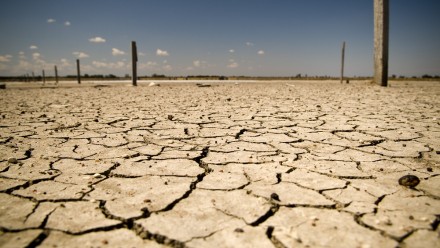2015 the hottest year on record - ANU experts comment
The US National Oceanic and Atmospheric Administration (NOAA) and NASA have just released their independent annual global analyses of temperature data for 2015.
The NOAA analysis reveals that global temperatures for 2015 have exceeded the previous record (from 2014) by an unprecedented margin. December 2015 was the warmest month of any month ever recorded, breaking the previous all-time record set just two months before in October 2015. Overall the global annual temperature has increased at an average rate of 0.17°C per decade since 1970.
The NOAA Report can be downloaded here.
NASA scientists concur with the NOAA results, based on separate independent analyses of the data. They highlight that 15 of the planet’s 16 warmest years have occurred since 2001.
ANU experts are available to comment on the findings. They can be contacted directly, or through the ANU media hotline on 6125 7979.
___________________________________________________________________
Dr Andy Hogg
Associate Professor & ARC Future Fellow
Geophysical Fluid Dynamics,
Research School of Earth Sciences
“NOAA’s figures show that 2015 global surface air temperature was 0.9°C above the 20th century average, the warmest year on record and a jump of 0.16°C above the previous (2014) record.
In the decade preceding 2013, warming of surface air temperature was relatively slow, but this can be accounted for by the fact that the heat in the earth system was being taken up by the ocean, mostly in the tropical Pacific. In 2015, a large El Nino event has helped to release this heat from the ocean, temporarily accelerating warming.
The surprise with this year’s data is not that it is the warmest year ever, but that it is such a huge jump in temperatures.”
Dr Sophie Lewis
Research School of Earth Sciences
ARC Centre of Excellence for Climate System Science
“Global temperatures in 2015 were the hottest since 1880, shattering the previous record set in 2014. This is already the fourth time the record has been broken this century. While strong El Nino conditions helped drive 2015’s hot temperatures, greenhouse gas warming is a major factor in recent records. This long-term warming trend will continue with increasing greenhouse gases from human activity.
Extreme global temperatures also reflect what we experienced in Australia in 2015. Since 2002, Australia has seen eight of its ten hottest years, with 2015 placing in the top five. We should be prepared for hot conditions to continue both globally and in Australia.”
Dr Geoff Cary
Associate Professor
Fenner School of Environment and Society
“Studies indicate that global warming has already been associated with more severe bushfire conditions across parts of Australia, and increased area burned in some regions.”
“The expected direct weather-related effects on bushfires suggest that, later this century, a warmer climate could result in more than a doubling of severe to catastrophic fire danger days and up to a 50 percent increase in area burned by bushfires.”
For media assistance, contact the ANU Media Hotline on 02 6125 7979.











